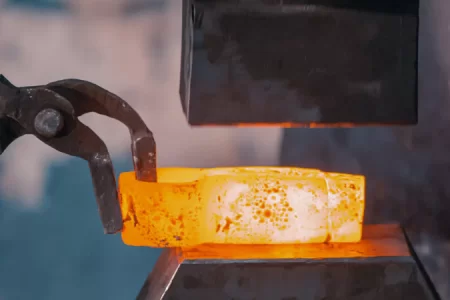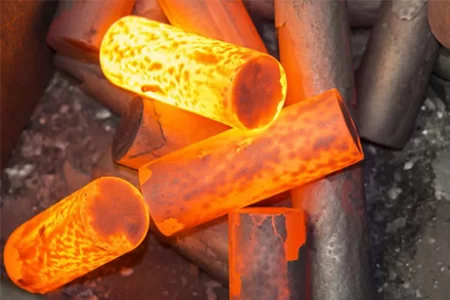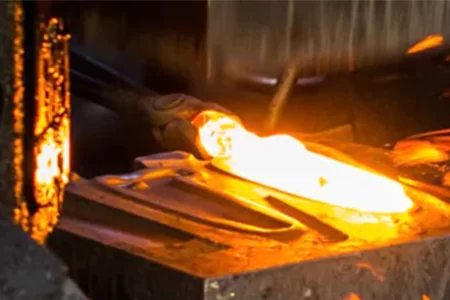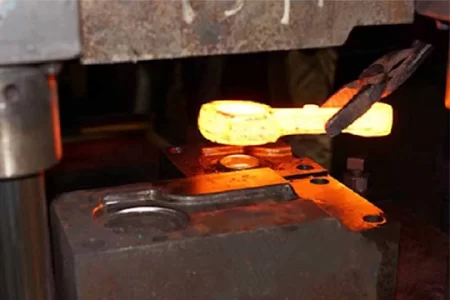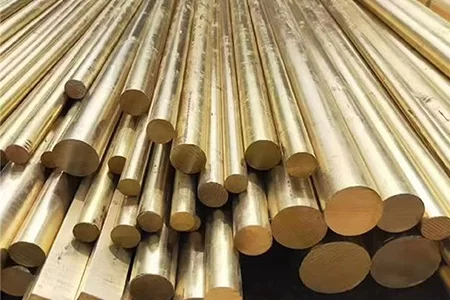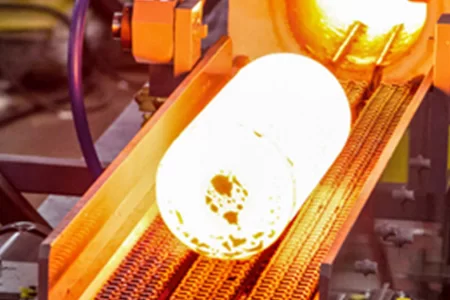By sharing knowledge, experience and views in the field of forging technology, we help you understand, learn and apply relevant technologies.

Hulk Metal Forging Technology
Share technical experience
-
Home>
-
Blog>
-
Technology>
HULK Metal CNC Machining:Make your life easier

Define CNC machining and its importance
CNC machining is a technology that controls mechanical equipment through a computer program. In this process, a specialized control system is used to drive the machine tool to achieve high-precision part production through precise machining paths, cutting processes, and workpiece positioning. CNC machining can not only automate the production process, but also significantly improve production efficiency and processing accuracy, and is suitable for mass production and manufacturing of high-complexity parts.
The emergence of CNC technology has brought revolutionary changes to traditional mechanical processing. It can replace traditional manual operations, reduce human errors, and improve processing consistency and accuracy. In addition, CNC machining can effectively process a variety of parts with complex shapes and precise dimensions, so it has been widely used in automobile manufacturing, construction accessories, mold processing, and other industries.
Popularization and development background of technology
With the continuous advancement of computer technology, electronic technology, and automation technology, CNC machining technology has gone through multiple stages of development. Initially, CNC technology was mainly used in mass production environments and was suitable for simple parts processing. With the maturity and popularization of technology, modern CNC machine tools can not only perform a single type of processing but also achieve a variety of process combinations, such as milling, turning, drilling, grinding, etc.
Since the 1970s, CNC machine tools have gradually developed towards high precision, high automation, and high intelligence, becoming an indispensable and important tool for modern manufacturing. With the technological innovation of the global manufacturing industry, CNC processing has become one of the core technologies of precision manufacturing.
CNC processing equipment types and functions
HULK METAL offers CNC machining services of any complexity for rapid prototyping and production parts. We have 3-axis, 4-axis, and 5-axis milling centers, the latest CNC lathes and turning centers.
3-Axis Milling Center:
This is the most common CNC milling equipment and is suitable for most general machining tasks. The 3-axis refers to the movement of the equipment in the three directions of X, Y, and Z. It is suitable for processing simple flat surfaces or shallow curved surfaces.
4-axis milling center:
A rotation axis (usually the A-axis) is added to the 3-axis, making the processing process more flexible and enabling complex shape processing. 4-axis milling centers are typically used in parts requiring complex angles or curved surfaces, such as automotive parts and mold processing.
Axis milling center:
The 5-axis machine tool adds a rotation axis (B-axis) to the 4-axis, which can process workpieces in five directions at the same time, making the production of complex parts more efficient and precise. 5-axis milling is usually used in fields such as precision instruments and high-precision molds.
Innovative features of modern CNC lathes
CNC lathes are important equipment in CNC machining and are widely used in the processing of shafts and cylindrical parts. Modern CNC lathes have many innovative features, such as automatic tool-changing systems, integrated control systems, and efficient cutting tool management systems. These innovations enable lathes to not only efficiently complete the processing tasks of a single process, but also to automatically switch processing procedures through the tool-changing system, improving production flexibility and efficiency.
Another outstanding feature of modern CNC lathes is their high-speed machining capabilities. With the application of high-speed spindles and high-precision servo systems, modern CNC lathes have greatly improved turning accuracy and processing speed and can meet the processing needs of complex parts with extremely high precision requirements.
Key technologies of CNC machining
A turning center is a CNC machine tool that integrates turning, milling, drilling, and other functions. It has a high degree of automation and versatility. Modern turning centers are usually equipped with multi-axis systems and advanced automatic tool-changing devices, which can complete multiple processing tasks in one process, greatly improving processing efficiency and accuracy. It has a high degree of automation can realize unmanned production, and is especially suitable for mass production and multi-process processing.
Application of CAD/CAM technology
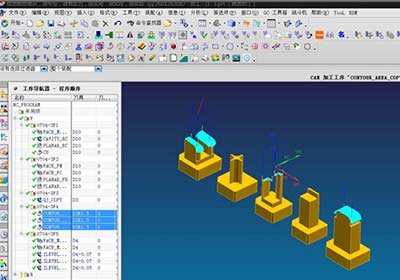
CAD (computer-aided design) and CAM (computer-aided manufacturing) are indispensable technologies in CNC machining. CAD is used in the design stage of products, using computers to draw precise part drawings or three-dimensional models to provide a reference for subsequent processing. CAM converts CAD designs into processing programs that can be executed by CNC machine tools. It calculates processing paths, cutting conditions, and tool selection through specialized software.
The combination of CAD/CAM technology can effectively improve the collaborative efficiency of design and processing, reduce manual intervention, and improve the processing accuracy and production efficiency of parts.
Processing accuracy and automation control
CNC machining can realize automated processing through high-precision servo systems and closed-loop feedback control systems. The servo system controls the movement of the machine tool and can adjust the position, speed, and direction in real time to ensure stable accuracy during the machining process.
Modern CNC systems also integrate a variety of automation functions, such as automatic calibration, tool wear detection, automatic tool setting of workpieces, etc., which effectively reduce the impact of human factors on machining accuracy, thus improving production efficiency and part consistency.
Analysis of multi-axis linkage technology
Multi-axis linkage technology is an important technology in CNC machining, which refers to the simultaneous cooperation of multiple axes of the machine tool to complete more complex machining tasks. Through multi-axis linkage, the workpiece can be continuously processed in multiple directions, which greatly improves the flexibility and precision of processing, and is especially suitable for complex three-dimensional curved surface processing.
The application of 5-axis linkage technology enables CNC machine tools to process more complex part shapes and is widely used in aerospace, automobiles, molds, and other fields.
CNC processing materials and application scope
Common processing materials (metals, composite materials, etc.)
CNC processing is suitable for a wide variety of materials, including metals, plastics, composite materials, etc. Among metal materials, common ones include aluminum alloy, stainless steel, titanium alloy, copper, etc. Different materials have different physical properties and processing difficulties, so choosing the right material is crucial to the smooth progress of the processing process.
Metal materials:
For example, aluminum alloys are widely used in automobiles, aerospace, and other industries because of their good processability and low density; stainless steel is often used in agricultural parts and precision equipment processing because of their good corrosion resistance and strength.
Composite materials:
Composite materials are usually made of resin and fiber. Due to their high strength and lightweight, they are widely used in aviation, aerospace, automotive, and other industries. CNC machining can deal with special challenges in composite material processing, such as interlayer detachment of materials and processing deformation.
Impact of material selection on product quality and cost
The choice of materials not only affects the mechanical properties of the parts but also directly determines the difficulty and cost of the processing process. Choosing appropriate materials can effectively reduce processing difficulty and production costs, and improve the quality of parts. For example, materials that are easier to process, such as aluminum alloys, can be processed at higher processing speeds, reducing time costs; while materials that are more difficult to process, such as titanium alloys, may require finer processes and higher tool life, increasing the time cost. production costs.
Production process optimization
The production process of CNC machining usually includes the following key steps:
1.Design stage: Design the three-dimensional model or two-dimensional drawing of the part through CAD software.
2.Programming stage: Use CAM software to generate the processing program of the CNC machine tool and calculate the tool path, cutting parameters, etc.
3.Processing stage: According to the processing program, the CNC machine tool performs automated processing.
4.Inspection stage: Conduct dimensional and quality inspections on the completed parts to ensure that they meet the design requirements.
The role of efficient fixtures and cutting tools
Efficient fixtures and cutting tools play a vital role in CNC machining. The fixture is used to fix the workpiece to ensure the stability and accuracy of the workpiece during processing; the cutting tool determines the processing efficiency and surface quality. Choosing appropriate fixtures and cutting tools can not only improve production efficiency but also extend the service life of equipment and reduce production costs.
How to improve production efficiency through process optimization
By optimizing the production process and reducing unnecessary processes and downtime, production efficiency can be significantly improved. The application of automation and intelligent equipment, such as automated tool-changing systems, online inspection systems, etc., can reduce manual intervention and improve the continuity and stability of production.
Quality control and testing technology
Online detection and quality analysis methods
Quality control in CNC machining usually includes two categories: online inspection and post-analysis. Online inspection technology includes real-time monitoring of the size and surface quality of workpieces through sensors, cameras, and other equipment so that problems can be discovered and adjusted in a timely manner. The quality analysis method mainly ensures that the parts meet the design requirements through later dimensional inspection, geometric tolerance measurement, surface roughness analysis, and other means.
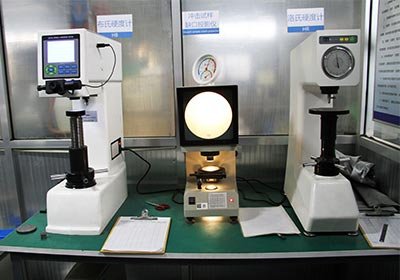
Key Strategies for Improving Part Consistency
To improve the consistency of parts, in addition to precise machine tool control, the equipment also needs to be rigorously calibrated and maintained before processing to ensure that it is in good working condition. In addition, optimizing tool selection, machining paths, and cutting parameters are also important means to ensure part consistency.
The future development trend of CNC machining
The integration of green processing and intelligence
In the future, CNC processing will integrate more green processing concepts to reduce energy consumption and material waste during processing. At the same time, with the introduction of intelligent technology, CNC processing equipment will be able to perform self-diagnosis, fault prediction, and production optimization, achieving more efficient and energy-saving production.
Application of artificial intelligence and big data analysis in CNC
Artificial intelligence and big data analysis will play an important role in CNC machining. Through real-time analysis of processing data, AI can predict equipment failures, optimize processing paths, and adjust processing parameters, thereby improving production efficiency and processing quality.
CNC machining technology has become an indispensable core technology in modern manufacturing. It not only improves the accuracy, efficiency, and consistency of part processing but also promotes the development of intelligence, greenness and automation. With the continuous advancement of technology, CNC processing will continue to provide more efficient and precise manufacturing solutions for all walks of life in the future, promoting the upgrading and transformation of the global manufacturing industry.
Article Navigation
Article Navigation
Industries
Foundries
-

July.01, 2024
Difference between hot forging and cold forging
READ MORE
-

June.27, 2024
What are the advantages and disadvantages of the hot forging process?
READ MORE
-

January.18, 2024
Forging: What Is It? What Are The Different Types of Hot Forging?
READ MORE
-

November.29, 2024
What is steel forging?
READ MORE
-

July.30, 2024
What are the materials for hot forging?
READ MORE
-

July.03, 2024
What are the processes of hot forging?
READ MORE



